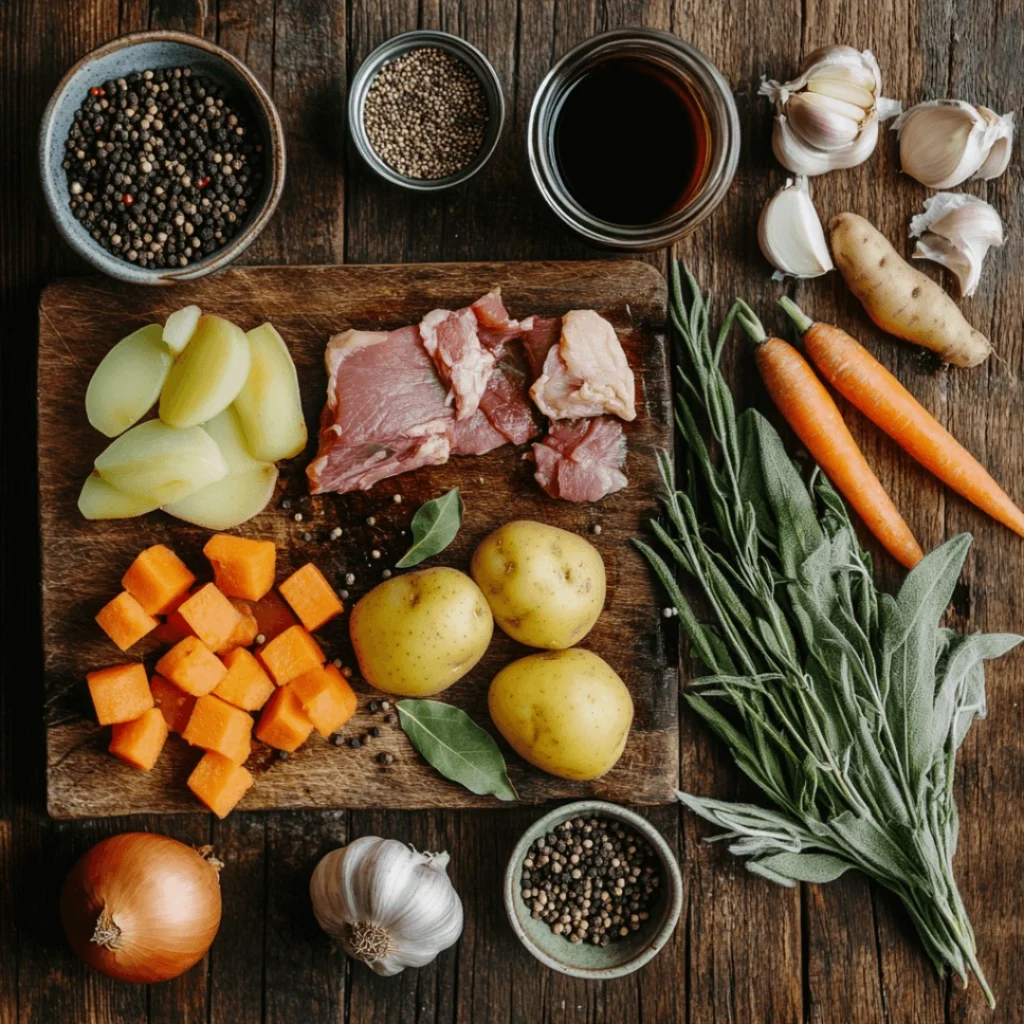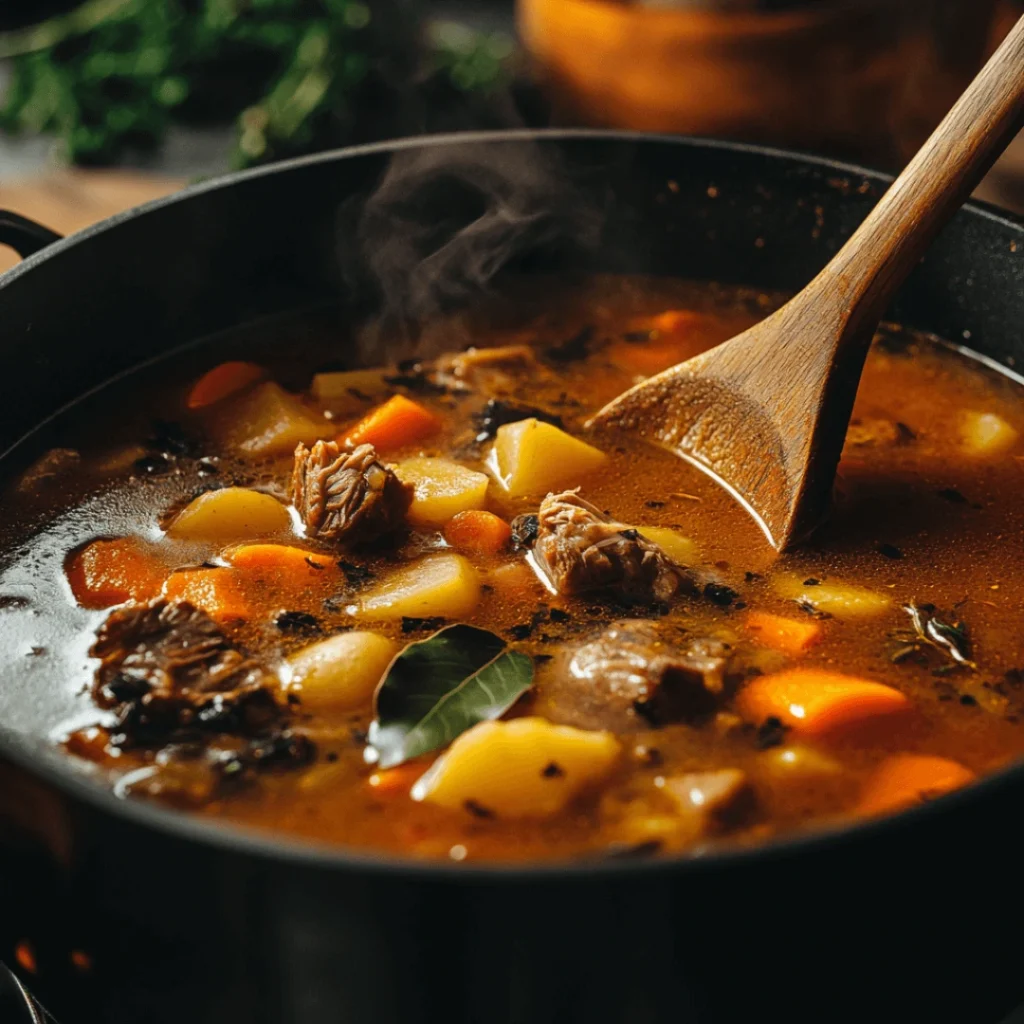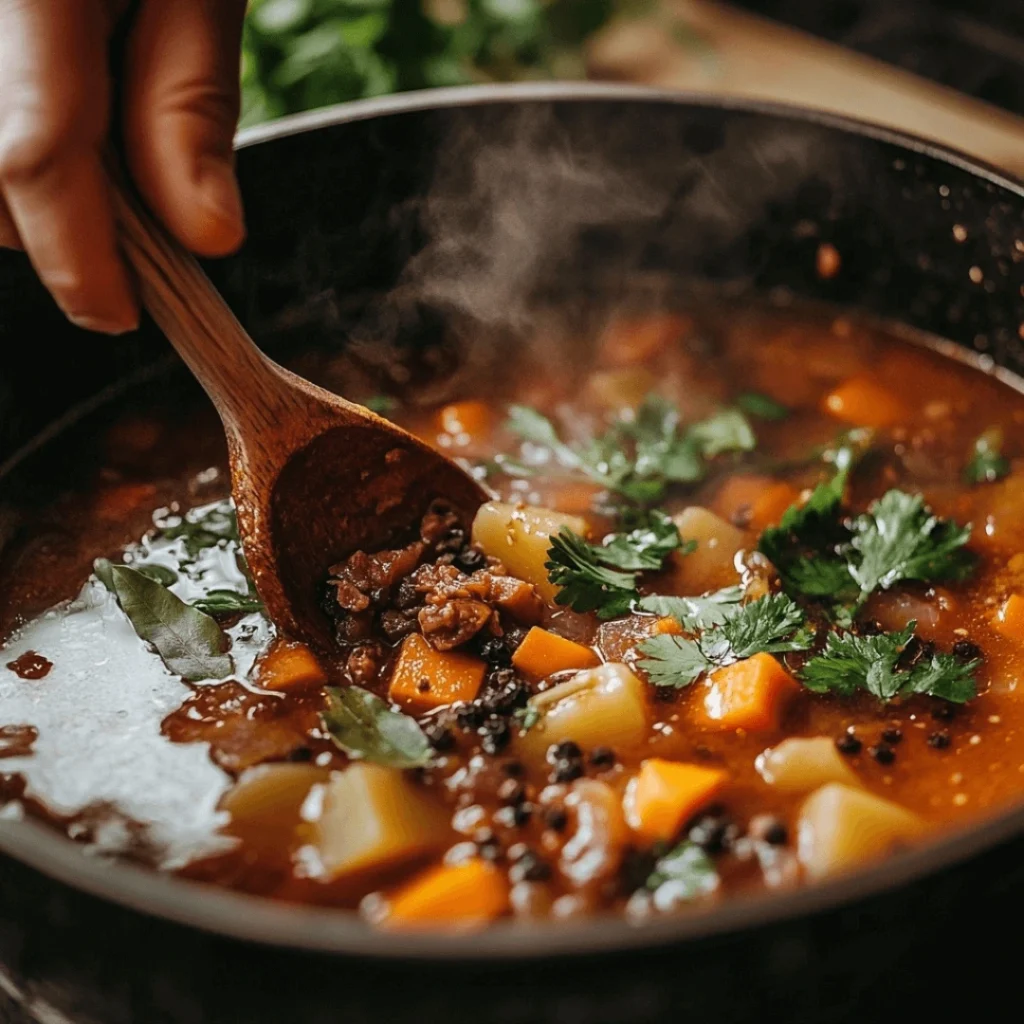Porcupine soup is a unique and flavorful dish enjoyed in various cultures for its rich taste and nutritional benefits. This traditional soup, made with tender porcupine meat, aromatic spices, and hearty vegetables, has been cherished for centuries. While it may sound unusual, porcupine meat is packed with protein and essential nutrients, making it a valuable addition to any adventurous food lover’s diet. In this article, we’ll explore the origins of porcupine soup, its health benefits, step-by-step preparation, and the best ways to enjoy this exotic dish.
Understanding Porcupine Soup
What is Porcupine Soup?
Porcupine soup is a traditional dish made using porcupine meat, slow-cooked with herbs, vegetables, and spices to create a rich and savory broth. The meat is known for its lean texture and mild, slightly gamey flavor, which absorbs seasonings well. While not commonly found in modern cuisine, porcupine soup has been enjoyed in indigenous and rural communities for centuries as a hearty and nourishing meal.
The History of Porcupine Soup
The origins of porcupine soup can be traced back to regions where porcupines are abundant, such as parts of Asia, Africa, and North America. Indigenous tribes and rural communities have long utilized porcupine meat as a sustainable protein source, particularly in times of scarcity. In traditional medicine, porcupine meat has been believed to have healing properties, often used to treat ailments such as arthritis and digestive issues.
Cultural Importance of Porcupine Soup
- Indigenous Cuisine: Many indigenous cultures prepare porcupine soup as a special dish, often served during gatherings and ceremonies.
- Traditional Healing: Some cultures believe that porcupine meat has medicinal benefits, particularly for strengthening the immune system.
- Sustainable Food Source: Historically, porcupines were hunted as a survival food, providing nourishment when other meat sources were scarce.
Porcupine soup remains a dish of curiosity and cultural significance, offering a glimpse into the diverse ways different communities have embraced unique ingredients in their cuisine.
Health Benefits of Porcupine Soup
Nutritional Profile of Porcupine Meat
Porcupine soup is not only a flavorful dish but also a highly nutritious one. Porcupine meat is rich in essential nutrients that provide several health benefits, making it a valuable protein source. Here’s a breakdown of its nutritional profile:
| Nutrient | Benefit |
|---|---|
| High-Quality Protein | Supports muscle growth and repair |
| Low in Fat | Helps maintain a balanced diet |
| Iron & Zinc | Boosts immunity and promotes red blood cell production |
| Amino Acids | Essential for overall body function |
| Collagen & Gelatin | Supports joint health and skin elasticity |
Why You Should Try Porcupine Soup
- Rich in Protein: Porcupine meat contains high-quality protein, which is essential for muscle repair and energy production.
- Low in Saturated Fat: Unlike many other meats, porcupine is naturally lean, making it a healthier choice for those looking to maintain a balanced diet.
- Supports Bone and Joint Health: The slow-cooked broth extracts nutrients such as collagen, which is beneficial for bones, joints, and skin.
- Boosts Immunity: With its high iron and zinc content, porcupine meat supports a healthy immune system, helping the body fight infections.
- Easily Digestible: Unlike some game meats, porcupine meat is tender and easy to digest when properly cooked.
Traditional Uses for Health
In some cultures, porcupine meat is believed to have medicinal properties. It has been traditionally used to:
- Treat inflammation and joint pain.
- Strengthen the immune system during illness.
- Improve digestion and gut health.
With its impressive nutrient content and cultural significance, porcupine soup is more than just a unique dish—it’s a nutritious and wholesome meal worth exploring.
Essential Ingredients for Porcupine Soup
Main Ingredients
To prepare porcupine soup, you’ll need a combination of fresh ingredients that enhance the natural flavors of the meat. Here’s what you’ll need:

- Porcupine Meat – The star ingredient, cleaned and prepared properly.
- Garlic & Onions – Adds depth and aroma to the broth.
- Root Vegetables (Carrots, Potatoes, Yams) – Enhances the heartiness of the soup.
- Ginger & Lemongrass – Provides a fresh, zesty flavor.
- Bay Leaves & Black Pepper – Enhances the richness of the broth.
- Salt & Soy Sauce – For seasoning and umami flavor.
- Water or Bone Broth – Serves as the base for the soup.
Optional Ingredients for Extra Flavor
For those who want to experiment with different flavors, these optional ingredients can elevate your porcupine soup:
- Coconut Milk – Adds a creamy texture and mild sweetness.
- Chili Peppers – Introduces heat for a spicy version of the soup.
- Tomatoes – Enhances the tanginess of the broth.
- Mushrooms – Adds an earthy flavor and boosts the nutritional value.
Selecting the Best Ingredients
When making porcupine soup, ingredient quality matters. Here are some tips for selecting the best ingredients:
- Choose fresh porcupine meat from a reliable source to ensure quality and safety.
- Opt for organic vegetables for maximum flavor and nutrients.
- Use homemade broth instead of store-bought for a richer taste.
By combining these carefully selected ingredients, you can create a flavorful, nutritious, and satisfying porcupine soup that showcases the richness of this unique dish.
Step-by-Step Recipe for Making Porcupine Soup
Making porcupine soup requires patience and careful preparation to ensure the meat is tender and flavorful. Follow these steps to create a delicious and hearty soup.
Step 1: Preparing the Porcupine Meat
Proper preparation is key to removing any gamey flavor and ensuring the meat is clean and safe to eat.
- Remove the Quills – If you’re working with fresh porcupine meat, use hot water or fire to remove the quills safely.
- Clean the Meat – Wash the meat thoroughly in water and vinegar to eliminate any residual dirt or odor.
- Cut into Pieces – Chop the meat into manageable portions for even cooking.
- Parboil the Meat – Boil the porcupine meat for 10-15 minutes in water with salt and ginger. This helps remove excess blood and reduces any strong gamey taste.
Step 2: Cooking the Soup Base
Now that the meat is prepared, it’s time to build the base of the soup.
- Sauté Aromatics – In a large pot, heat some oil and sauté chopped onions, garlic, and ginger until fragrant.
- Add the Meat – Brown the porcupine meat to lock in its flavors.
- Pour in the Broth – Add enough water or bone broth to cover the meat. Bring to a boil.
- Simmer for Flavor – Lower the heat and let it simmer for at least 1.5 to 2 hours. This allows the flavors to blend and the meat to become tender.

Step 3: Adding Vegetables and Spices
To enhance the taste and texture of porcupine soup, add vegetables and seasonings.
- Add Root Vegetables – Toss in potatoes, carrots, and yams to create a hearty soup.
- Season to Taste – Add bay leaves, black pepper, salt, and soy sauce for a balanced flavor.
- Incorporate Optional Ingredients – If using coconut milk or chili peppers, add them during the last 20 minutes of cooking.

Step 4: Serving and Enjoying
Once the soup is ready, it’s time to enjoy this rich and comforting dish.
- Garnish with Fresh Herbs – Sprinkle chopped cilantro or green onions for added freshness.
- Pair with Side Dishes – Serve porcupine soup with rice or cornbread for a complete meal.
- Enjoy Hot – This soup tastes best when served warm, allowing the flavors to shine.
For more unique and hearty soup recipes, check out this delicious Chopt Soup recipe for another exciting culinary experience!
By following this step-by-step guide, you can create an authentic and flavorful porcupine soup that showcases the depth of traditional cooking.
Cultural Significance of Porcupine Soup
Porcupine Soup in Indigenous Cuisine
Porcupine soup has long been a part of indigenous diets across various regions, especially in Asia, Africa, and North America. Native tribes traditionally hunted porcupines for their meat, viewing them as a sustainable and readily available protein source. The soup was often prepared during community gatherings, medicinal rituals, and seasonal feasts.
- Asia: In some parts of China and the Philippines, porcupine meat is believed to have medicinal benefits, often included in herbal broths to promote healing and overall well-being.
- Africa: Some African communities prepare porcupine stew with locally sourced spices, slow-cooking the meat for hours to achieve a rich and flavorful broth.
- North America: Many indigenous tribes in North America consumed porcupine meat as a survival food during harsh winters, appreciating its high protein content and easy availability.
Symbolism and Folklore
Beyond its nutritional value, porcupine soup holds cultural and symbolic meanings in different traditions.
- Healing Properties: Many cultures believe that porcupine meat has therapeutic benefits, particularly for treating joint pain, inflammation, and digestive issues.
- Good Luck and Strength: In certain folklore, consuming porcupine meat is thought to bring strength, endurance, and protection against illness.
- Sustainability: Traditional hunters often emphasized the sustainable nature of porcupine hunting, ensuring minimal waste and respecting the balance of nature.
How Porcupine Soup is Evolving Today
With growing interest in exotic meats and traditional cuisines, porcupine soup is making its way into modern culinary discussions. Some adventurous chefs and home cooks are experimenting with fusion recipes, incorporating contemporary flavors while preserving the essence of the dish.
If you’re curious about other traditional and culturally significant soups, take a look at this unique Purple Black Bean Soup recipe for another rich and hearty option!
Safety and Ethical Considerations
Is It Legal to Eat Porcupine?
Before preparing porcupine soup, it’s essential to understand the legal aspects of consuming porcupine meat. Regulations vary by country and region, so checking local wildlife laws is crucial.
- United States & Canada: Hunting porcupines may be legal in some states and provinces, but permits are often required.
- Asia & Africa: Some countries allow porcupine meat to be sold in markets, while others protect certain porcupine species due to conservation efforts.
- Europe: Porcupine hunting is generally restricted, and meat is not commonly available.
If you’re interested in trying porcupine soup, always source the meat ethically and legally to ensure compliance with local laws.
Ethical Hunting and Sourcing
Porcupines play an essential role in the ecosystem, so responsible and ethical sourcing is vital. Here are some ethical considerations:
- Sustainable Hunting Practices: Only hunt porcupines in regions where it is legal and sustainable to do so.
- Avoid Protected Species: Some porcupine species are endangered or protected by law. Always verify before sourcing meat.
- Purchase from Certified Vendors: If buying porcupine meat, choose reputable sellers who follow legal and ethical guidelines.
Health and Safety Precautions
Since porcupine meat is considered exotic, proper handling and cooking methods are necessary to ensure safety.
- Thorough Cleaning: Remove all quills carefully and wash the meat properly to avoid contamination.
- Proper Cooking: Slow-cooking porcupine meat ensures it is tender and safe to consume. Avoid consuming undercooked meat.
- Check for Zoonotic Diseases: Wild game meat should always be inspected or sourced from trusted suppliers to prevent potential diseases.
For more insights into cooking with unique ingredients, check out this Benignis Potato Soup Recipe for a comforting and nutritious alternative!
Alternative Recipes and Variations
While traditional porcupine soup is rich and flavorful, there are several variations that cater to different tastes and dietary preferences. Whether you prefer a milder flavor, a spicier kick, or even a vegetarian alternative, here are some exciting ways to customize your porcupine soup.
Vegetarian Alternative: Mock Porcupine Soup
For those who want to experience the essence of porcupine soup without using actual meat, a vegetarian version can be made using hearty plant-based ingredients.
Ingredients:
- Mushrooms (such as shiitake or portobello) to mimic the meaty texture
- Jackfruit for a fibrous, shredded meat-like consistency
- Vegetable broth for depth of flavor
- Root vegetables (potatoes, carrots, yams) for heartiness
- Lentils or beans for added protein
Instructions:
- Sauté onions, garlic, and mushrooms in oil until fragrant.
- Add jackfruit, lentils, and vegetable broth, then simmer for 40 minutes.
- Season with soy sauce, black pepper, and bay leaves for a savory taste.
- Serve hot with rice or cornbread.
Spicy Porcupine Soup for Heat Lovers
If you enjoy bold flavors, adding a spicy element can take porcupine soup to the next level.
Spicy Enhancements:
- Chili Peppers: Fresh or dried chili peppers can bring a fiery depth.
- Cayenne Pepper: Adds a sharp, spicy heat to the broth.
- Sichuan Peppercorns: Introduces a numbing, tingling sensation popular in Asian cuisine.
Cooking Tip:
For the best spicy porcupine soup, add the chilies and spices during the last 30 minutes of cooking to infuse the broth without overpowering the meat’s natural flavor.
Creamy Porcupine Soup with Coconut Milk
For a richer and slightly sweet variation, adding coconut milk creates a smooth and creamy porcupine soup.
How to Make It Creamy:
- Replace part of the broth with coconut milk for a velvety texture.
- Add lemongrass and ginger for an aromatic, Southeast Asian-inspired twist.
- Serve with a squeeze of lime juice for balance.
Each of these variations brings a unique twist to porcupine soup, making it adaptable to different palates. If you love trying diverse flavors, discover this unique Rice with French Onion Soup Recipe for another comforting dish!
Common Mistakes to Avoid When Making Porcupine Soup
Even experienced cooks can make mistakes when preparing porcupine soup. Avoiding these common errors will ensure the soup is flavorful, safe, and enjoyable.
1. Overcooking or Undercooking the Meat
Porcupine meat is naturally lean and requires slow cooking to become tender. Overcooking at high heat can make it dry, while undercooking can result in tough meat.
How to Avoid It: Simmer the soup over low heat for at least 1.5 to 2 hours to fully develop the flavors and soften the meat.
2. Not Removing Quills Properly
One of the biggest challenges with porcupine meat is handling the quills. If not removed properly, they can pose a serious safety hazard.
How to Avoid It:
- Use boiling water or fire to help loosen the quills before removing them.
- Double-check the meat to ensure no quills remain before cooking.
3. Skipping the Pre-Boiling Step
Porcupine meat can have a strong, gamey taste, which some people may find unpleasant.
How to Avoid It: Parboil the meat for 10-15 minutes in salted water with ginger or vinegar before using it in the soup. This helps reduce the strong flavor and removes excess blood.
4. Using Too Many Competing Flavors
While porcupine soup can be enhanced with various spices and vegetables, too many ingredients can overpower the natural taste of the meat.
How to Avoid It: Stick to simple, balanced seasonings such as onions, garlic, bay leaves, and mild spices. If adding strong flavors like coconut milk or chili, use them in moderation.
5. Not Checking Legal Restrictions
In some areas, hunting or consuming porcupine meat may be restricted due to conservation laws.
How to Avoid It: Always check local regulations before sourcing porcupine meat and buy from ethical suppliers where available.
By avoiding these mistakes, you will create a well-balanced and enjoyable porcupine soup. If you’re interested in another comforting and flavorful dish, try this Spark Chicken Taco Soup.
FAQs About Porcupine Soup
What does porcupine meat taste like?
Porcupine meat has a mild, slightly gamey flavor, similar to rabbit or wild boar. It absorbs seasonings well and becomes tender when slow-cooked.
Is porcupine soup safe to eat?
Yes, porcupine soup is safe to eat as long as the meat is properly cleaned and cooked. Removing the quills and pre-boiling the meat helps ensure safety and enhances flavor.
Where can I buy porcupine meat?
Porcupine meat is not commonly available in regular supermarkets. It can sometimes be found at specialty exotic meat markets, online vendors, or obtained through legal and ethical hunting in permitted regions.
Can I freeze porcupine meat?
Yes, porcupine meat can be frozen for up to three months. It should be stored in an airtight container or vacuum-sealed bag to maintain freshness.
What are some good side dishes for porcupine soup?
Porcupine soup pairs well with rice, cornbread, roasted vegetables, or traditional flatbreads. A fresh salad or pickled vegetables can also complement the dish.
How long does it take to cook porcupine soup?
The cooking time varies, but for the best results, it should be slow-cooked for at least 1.5 to 2 hours. This ensures the meat becomes tender and the flavors fully develop.
Conclusion
Porcupine soup is a unique and culturally significant dish that offers a rich blend of flavors, nutrition, and tradition. With its lean and protein-packed meat, this soup has been cherished in various regions for its hearty and nourishing qualities. Whether you are an adventurous foodie, exploring traditional recipes, or seeking a new culinary experience, porcupine soup is worth trying.
By following the step-by-step guide, selecting high-quality ingredients, and avoiding common mistakes, you can prepare a delicious and well-balanced porcupine soup at home. There are also different variations to explore, from spicy versions to creamy coconut-infused adaptations, allowing you to customize the dish to your preference.
If you are interested in more exciting and hearty soup recipes, discover this flavorful Chopt Soup for another comforting meal.
Print
Porcupine Soup: A Unique and Hearty Dish to Try
- Total Time: 2 hours 20 minutes
- Yield: One large pot of porcupine soup
Description
Porcupine soup is a unique and flavorful dish enjoyed in various cultures for its rich taste and nutritional benefits. This traditional soup, made with tender porcupine meat, aromatic spices, and hearty vegetables, has been cherished for centuries. The slow-cooked broth extracts the natural flavors of the ingredients, resulting in a hearty, nourishing meal perfect for adventurous food lovers. Whether you’re exploring indigenous cuisine or seeking a high-protein, immune-boosting dish, porcupine soup is a fascinating recipe to try.
Ingredients
Main Ingredients:
- 2 lbs porcupine meat, cleaned and cut into pieces
- 1 large onion, chopped
- 4 cloves garlic, minced
- 1-inch piece ginger, sliced
- 2 stalks lemongrass, crushed (optional)
- 3 carrots, peeled and chopped
- 2 potatoes, diced
- 1 sweet yam, chopped (optional)
- 6 cups water or homemade bone broth
- 2 bay leaves
- 1 teaspoon black pepper
- 1 tablespoon soy sauce
- 1 teaspoon salt (adjust to taste)
- 2 tablespoons cooking oil
Optional Ingredients for Extra Flavor:
- 1 cup coconut milk (for a creamy texture)
- 2 chili peppers, sliced (for a spicy kick)
- 2 tomatoes, chopped (for a tangy broth)
- ½ cup mushrooms, sliced (for an earthy flavor)
- Fresh cilantro or green onions for garnish
Instructions
Step 1: Preparing the Porcupine Meat
- Remove the Quills – If using fresh porcupine meat, remove quills using hot water or fire.
- Clean the Meat – Wash thoroughly in water and vinegar to eliminate any residual odor.
- Parboil the Meat – Boil the porcupine meat in water with a pinch of salt and ginger for 10-15 minutes to remove excess blood and gamey taste. Drain and set aside.
Step 2: Cooking the Soup Base
- Sauté Aromatics – In a large pot, heat cooking oil over medium heat. Sauté the chopped onions, garlic, and ginger until fragrant.
- Add the Meat – Add the prepared porcupine meat and brown it slightly to enhance flavor.
- Pour in Broth – Add water or bone broth, then bring to a boil.
- Simmer Slowly – Reduce heat to low and let simmer for 1.5 to 2 hours until the meat becomes tender.
Step 3: Adding Vegetables and Seasonings
- Incorporate Root Vegetables – Add carrots, potatoes, and yams. Let cook for 20-30 minutes until tender.
- Season to Taste – Stir in soy sauce, bay leaves, black pepper, and salt. Adjust seasoning as needed.
- Optional Additions – Add coconut milk, chili peppers, tomatoes, or mushrooms for extra depth of flavor.
Step 4: Serving and Enjoying
- Garnish and Serve – Sprinkle chopped cilantro or green onions on top.
- Pair with Side Dishes – Serve hot with rice, cornbread, or traditional flatbread for a complete meal.
Notes
- Substitutions: If porcupine meat is unavailable, try rabbit or wild boar as alternatives.
- Storage: Store leftovers in an airtight container in the refrigerator for up to 3 days. Reheat before serving.
- Spicy Version: Add extra chili peppers or Sichuan peppercorns for a bolder flavor.
- Ethical Considerations: Ensure porcupine meat is sourced legally and sustainably. Always check local hunting regulations.
- Prep Time: 20 minutes
- Cook Time: 2 hours
- Cuisine: Indigenous, Traditional, Exotic
Nutrition
- Serving Size: 4-6 servings
- Calories: ~300 kcal
- Fat: ~8g
- Carbohydrates: ~20g
- Protein: ~30g

